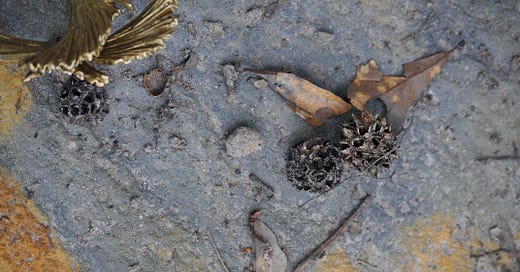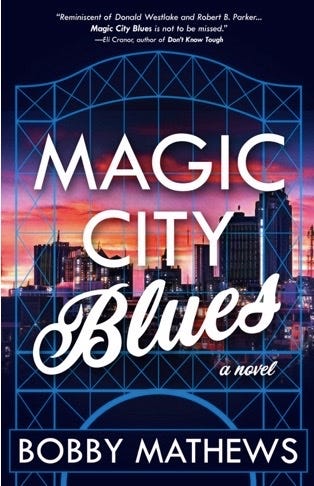Memory, how it works, how things connect, what we retain, what we discard, do we even discard anything or is that enormous pile of information sitting unused because we don’t bother looking for it? These questions have always interested me.
If you take Psychology 101, you’ll learn that specialized areas in the brain are involved in the memory process. The amygdala (fear, stress, emotions), the hippocampus (long term memory), the cerebellum (motor learning, conditioned responses), and the prefrontal cortex (encoding, retrieval).
Accident survivors can experience specific memory losses depending on where their injuries are located. But there are also examples of recovery that tend to indicate that the brain is flexible and can redistribute functions, from one damaged area to a healthy one.
If your eyes are starting to glaze over, don’t worry, I’m not going to get much deeper into this. There are plenty of resources online, and a lot of research is going on in that field.
One theory of memory (supported by some scientists, opposed by others) fascinates me: memory as a hologram. Memory as a network, 3D, spatial connections. In a hologram, every piece contains the totality. In other words: our memories would not be stored like index cards in drawers. Each index card, or fragment of a card if it’s big enough, would contain the whole thing, and it’s all connected.
I find that wonderful. Magical. Imagine … Thinking about my grandfather’s white rabbits leads to my aunt’s canary that we bird-sitted for a while, and my brother couldn’t stop sneezing, and on and on.
That brings me to the subject of this post, by way of a quote from Ray Bradbury.
“A writer’s past is the most important thing he has. Sometimes an object, a mask, a ticket stub, anything at all, helps me remember a whole experience, and out of that may come an idea for a story.”
Bradbury was very generous with his writing tips. He wrote about the practice of writing (Zen in the Art of Writing) and spoke at length about it in conferences. I highly recommend listening to him. He’s on YouTube and a lot of fun.
I find what he says inspiring and wise. Things like: “Don’t be afraid to write crap.” Or: “Don’t think.” Or: “Write with joy.” Or: “Write fast.” It won’t work for everybody, but it works for me. Sometimes he sounds like the sarcastic GP that you go to, to complain about an ache. “Doctor, when I make this movement, it hurts.” Bradbury says: “If it hurts, don’t do it.”
I vaguely remember (yes, bad recall!) that he talked somewhere about the bounty of childhood memories. I couldn’t find the exact quote but the one above delivers a similar message.
We all have an encyclopedia of free materials in our heads, going back to a time when we weren’t yet bombarded with distractions and interferences of all kinds. When impressions were new, fresh, colorful. That encyclopedia isn’t static. It gathers additional pages all the time, but childhood memories are special. They’re not directly accessible which makes them mysterious. They take a little effort to get to. Compare the memory of your first pair of roller skates with the memory of the car you swapped for a newer model a year ago. It tastes and smells different. The mist of time put a thin film over the window. Images are distorted, truncated, some are artificially bright, some aren’t even our own memories but echoes of things we’ve been told. They’re unpredictable which makes wonderful fodder for storytelling.
I’m not suggesting we should all write an autobiography. That would be insufferably self-centered and, in most cases, terribly boring.
What I’m hinting at is the pair of roller skates or Bradbury’s ticket stub, a thread of memory that can be pulled on, a connection point in the hologram. Unless it’s linked to a major event, the memory won’t be the whole story. It might be a jumping point or a detail in a scene that will evoke atmosphere or mood. What is even more magical, is that the more you let the memories seep in, the more you will remember.
Not all my stories contain one of these memory nuggets, although, unconsciously, maybe they do. The writing has to come from somewhere.
Here are a few examples.
The Spring – I know that place very well. I made blackberry-ade with my friends and we built a “fort” in the trees. There was no poison ivy but rose hip bays were involved (the little fluff inside itches like hell!).
Spy Head – I’ve walked up to that observatory in the dunes many times, everything else is entirely fictional, I swear.
Perfect Day – I can show you the bridge and the rail tracks. Jimmy’s discovery? No.
Apples in the Attic – That one is loaded with memories. The attic, the apples, the sheets hung up to dry on a rainy laundry day. It is poetic license to turn sweet stuff into light horror.
I could go on. Go read a little Ray Bradbury and feel the memories between the words. Dandelion Wine, Something Wicked This Way Comes. Or anything by Stephen King. Or John Irving, or … hey, everybody does it!
What I’m reading
Magic City Blues, by Bobby Mathews. Here’s my review.
In his previous book, Living the Gimmick, Bobby Mathews immersed the reader in the world of pro-wrestling. It was strange and exhilarating. This time, he takes us for a breathless tour of Birmingham, Alabama. We see the city, the good, the very bad and the unspeakably ugly that populate it through the eyes of Kincaid - enforcer, head-knocker, muscle for hire. It starts with a simple assignment: Protect my daughter, says a local big-time crook. Protect her from what, or rather from whom? That turns out to be a much more complex question than Kincaid envisioned. There's always the risk of getting hurt in a job like that and Kincaid gets hurt a lot. He also responds in kind. But there's more than knocks in "Magic City Blues". The relationship between Kincaid and Laura D'Agostino, the cop, gives the story its heart, a big, bewildered heart. This is great writing, fast, colorful and evocative. Oh, and did I mention Kincaid knows his way around a kitchen? I tore through this book in one night and one day. A speed that (almost) matches D'Agostino's behind the wheel of a car.
That’s it for now, see you next time!






I sometimes think the encyclopedia in my head is missing a few volumes...
Wow,. Lots of sweet and savory food for thought. Thanks.